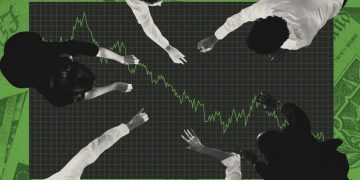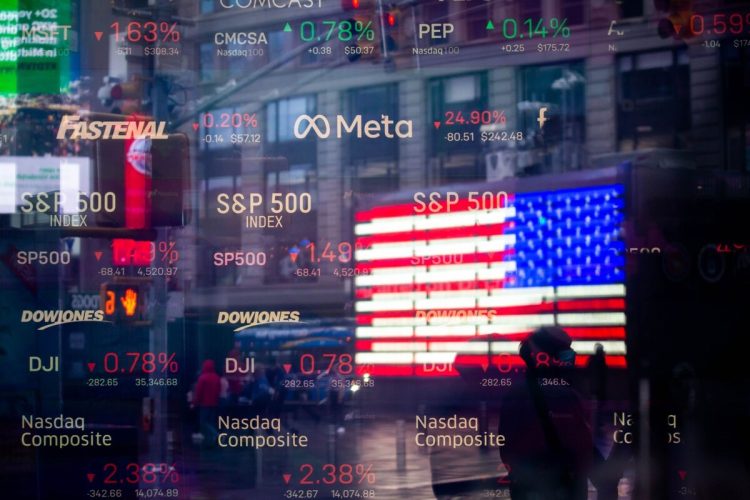Introduction: Examining the Overvaluation of Major Tech Stocks Like Apple, Amazon, and Tesla, and the Potential for a Tech-Driven Market Correction
The rapid growth of major tech stocks like Apple, Amazon, and Tesla over the last decade has captured the attention of investors worldwide. With their market dominance, innovative products, and strong brand recognition, these companies have become the darlings of Wall Street. However, as their stock prices have continued to surge to record highs, there are growing concerns about the sustainability of these valuations.
Many investors are beginning to wonder whether we are witnessing the formation of another tech bubble—one that could soon pop, leading to a dramatic market correction. The signs are there: an overreliance on speculation, inflated stock prices disconnected from underlying fundamentals, and a growing number of retail investors pouring money into these high-flying stocks. In this article, we will examine the potential risks associated with the current surge in tech stocks, drawing parallels with the dot-com bubble of the late 1990s, exploring the role of speculation, and analyzing whether the market could be heading toward another crash.
Tech Bubble Comparisons: Drawing Parallels Between the Current Tech Stock Surge and the Dot-Com Bubble of the Late 1990s
The dot-com bubble of the late 1990s is a well-known cautionary tale for tech investors. During that period, stocks of internet-based companies skyrocketed, driven largely by speculation and hype rather than solid financial performance. The rapid expansion of the internet led investors to believe that tech stocks could only go up, fueling a massive wave of investment that eventually culminated in a spectacular crash in 2000.
Today, a similar pattern appears to be emerging. As we see tech stocks reaching unprecedented valuations, there are several parallels to the dot-com era that cannot be ignored:
- Skyrocketing Valuations: In the 1990s, companies like Amazon and Pets.com were valued at astronomical levels despite having little to no profits. Similarly, tech giants like Tesla and Apple have experienced incredible stock price increases, often driven more by hype than by fundamentals. For example, Tesla’s valuation has reached over $1 trillion, even though its profit margins and earnings growth are still relatively modest compared to traditional automakers.
- Speculation-Driven Rally: Just as the dot-com boom was fueled by speculative trading, the current tech stock surge has been driven by speculative investments, especially from retail investors. Platforms like Robinhood and Reddit’s WallStreetBets have created a retail-driven trading environment where investors are buying stocks based on momentum, social media hype, and fear of missing out (FOMO), rather than on solid financial analysis. This speculative environment is eerily reminiscent of the one that led to the dot-com bust.
- Overconfidence and Hype: In the late 1990s, there was an overwhelming belief that internet companies would revolutionize the world and that their future growth potential was limitless. A similar sense of euphoria surrounds today’s tech stocks, with investors believing that companies like Apple, Amazon, and Tesla are “too big to fail” and that their future growth is inevitable. This overconfidence can create a dangerous environment where even the slightest negative catalyst can trigger a major sell-off.
- Lack of Profitability and Sustainability: Many of the companies that dominated the dot-com era, such as Webvan and eToys, were not profitable despite their high valuations. The same issue is present today with certain tech stocks. For instance, while Tesla has made strides toward profitability, its valuation still far exceeds the underlying financial performance, with P/E ratios that are unsustainable in the long term. Similarly, companies like Amazon continue to rely on massive market share growth rather than profits to justify their valuations.

The Risk of Speculation: How Speculative Trading, Fueled by Social Media Hype and Retail Investors, Has Inflated Stock Prices Beyond Their Intrinsic Value
A major driver behind the overvaluation of tech stocks today is speculation, particularly from retail investors. This phenomenon is not new, but the rise of social media and online trading platforms has made it more pronounced. In the early 2000s, speculation in tech stocks was driven by rumors, online chat rooms, and the excitement surrounding the “new economy.” Today, platforms like Reddit, Twitter, and TikTok are acting as catalysts for hype-driven buying, creating rapid price swings and inflating stock prices beyond their intrinsic value.
The role of retail investors in the current tech stock rally cannot be underestimated. Driven by FOMO, many individual investors are buying into stocks like GameStop, AMC, and Tesla, encouraged by viral social media trends. These investors often lack the experience or financial understanding of traditional institutional investors, which can lead to dangerous mispricing of stocks. For instance, Tesla’s valuation is largely based on its potential in the electric vehicle market, but there are growing concerns that its current stock price may not be sustainable if it fails to meet overly ambitious growth projections.
Speculation is further fueled by low-interest rates, which have encouraged risk-taking behavior in the markets. With central banks maintaining ultra-low rates and pumping liquidity into the system, there has been an increasing amount of capital searching for returns in high-growth sectors like technology. This has inflated valuations beyond what is supported by the underlying fundamentals.
Fundamental Analysis: Analyzing the Disconnect Between Tech Stock Valuations and Their Underlying Financial Performance, Such as Profit Margins and Earnings Growth
At the heart of the current tech stock overvaluation is a disconnect between stock prices and fundamental financial performance. While Apple, Amazon, and Tesla continue to report impressive revenue growth, their stock prices have grown at a pace far outstripping their financial results.
- Price-to-Earnings (P/E) Ratios: The P/E ratio is a common valuation metric used to assess whether a stock is overvalued or undervalued. In the case of Tesla, the company’s P/E ratio has reached levels that are unsustainable when compared to traditional automakers. Similarly, Amazon has long traded at a high P/E ratio, but this has often been justified by its focus on reinvestment and market share growth. However, as growth slows in some segments, these valuations may become increasingly difficult to sustain.
- Profit Margins: Despite their size, many of these tech giants still face challenges in terms of profitability. While Apple has maintained strong margins, other companies like Tesla are still in the process of proving that they can scale production and achieve consistent profitability. If these companies cannot meet the market’s high growth expectations, a correction could be inevitable.
- Earnings Growth: Another fundamental factor to consider is earnings growth. While tech stocks have been growing rapidly in terms of top-line revenue, their earnings growth has not always matched the expectations baked into their stock prices. For example, Amazon has seen its profits increase, but at a slower pace than its stock price would suggest. If earnings growth slows or becomes more volatile, stock prices could be exposed to significant downside risk.
Conclusion: Warning That a Significant Market Correction Could Be Imminent, with Investors Potentially Facing Substantial Losses if They Do Not Reconsider Their Exposure to Overvalued Tech Stocks
In conclusion, while the tech sector remains a powerful force in the global economy, the current market environment is showing signs of overvaluation and speculation. The parallels between today’s market and the dot-com bubble of the late 1990s are striking, with inflated valuations, speculative trading, and unsustainable growth projections all playing a part in driving stock prices higher than they should be.
For investors, the risk is clear: if a correction occurs, many could face significant losses. Tech stocks have been the driving force of the market for years, but a potential crash is becoming increasingly likely as valuations reach unsustainable levels. Investors should carefully evaluate their exposure to these stocks, particularly in light of the disconnect between their fundamentals and market valuations. A tech-driven market correction could be imminent, and it’s essential for investors to prepare themselves for the potential fallout. Those who do not reassess their positions may find themselves caught in the next big market crash.



































